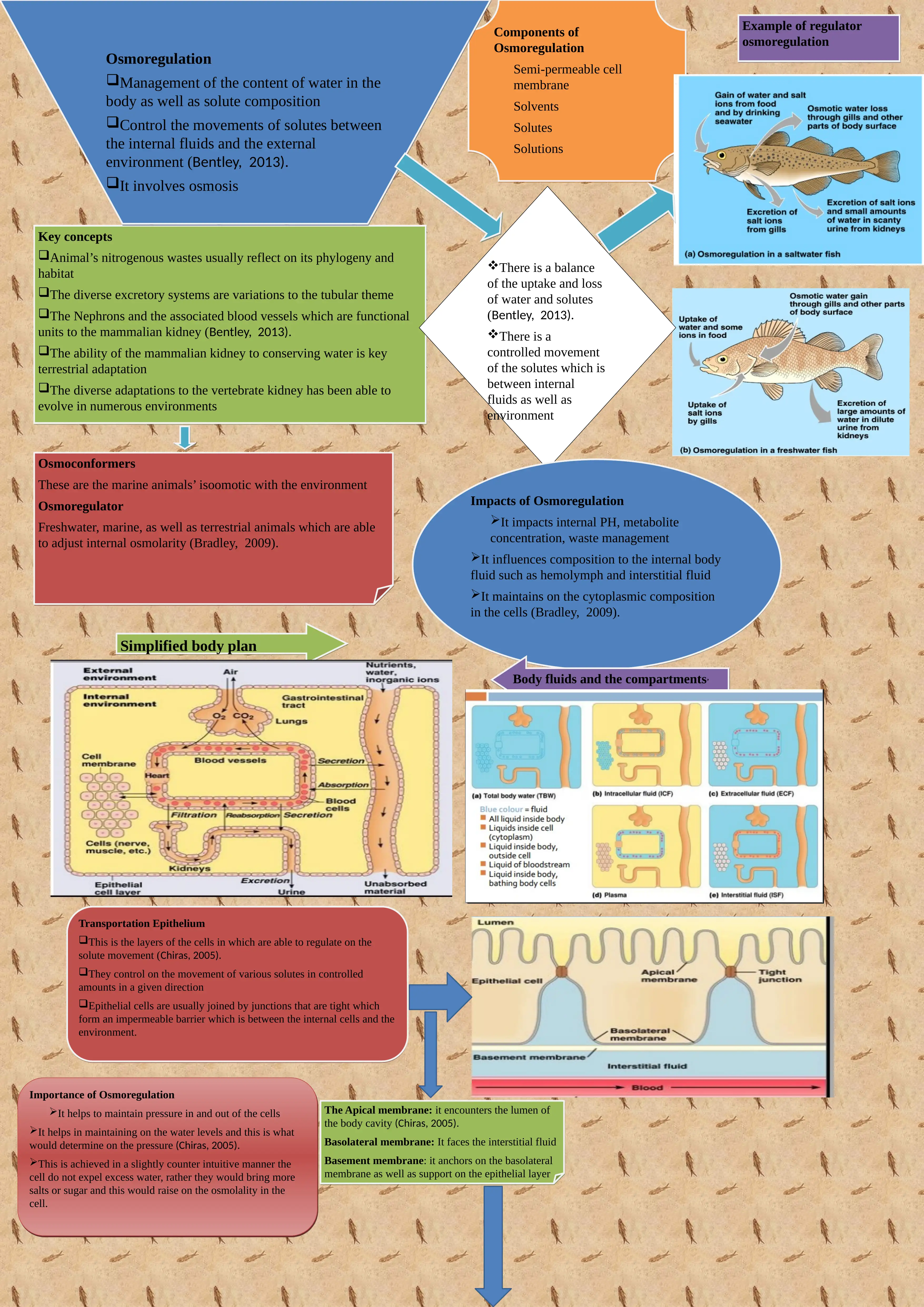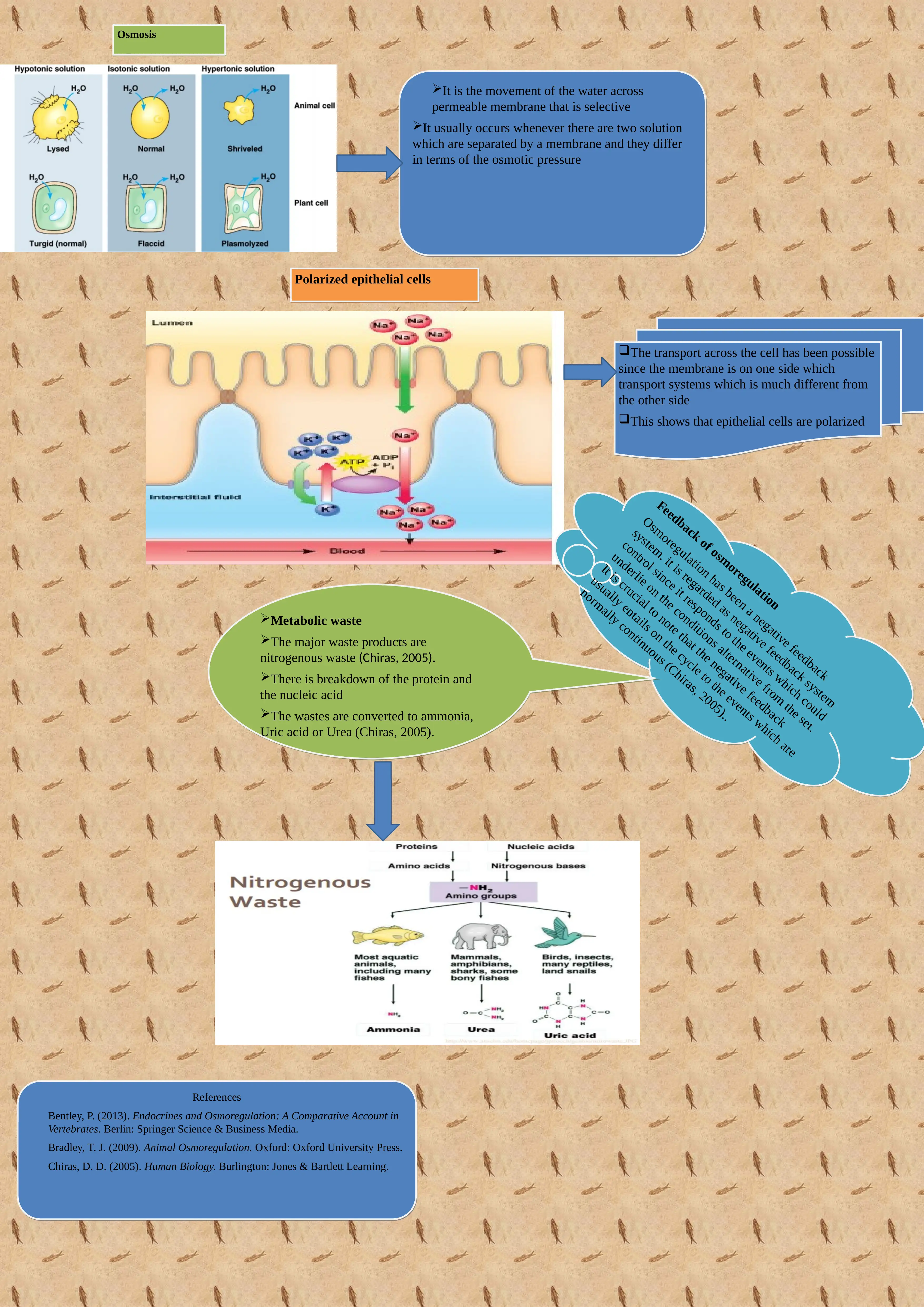Osmoregulation: Biological Processes, Feedback, and Animal Adaptations
VerifiedAdded on 2023/06/10
|2
|766
|113
Report
AI Summary
This report provides a comprehensive overview of osmoregulation, the biological process that controls the concentration of fluids within living organisms. It details the key components of osmoregulation, including semi-permeable cell membranes, solvents, solutes, and solutions, and explains the balance of water and solutes. The report differentiates between osmoconformers and osmoregulators, highlighting the impacts of osmoregulation on internal pH, metabolite concentrations, and fluid composition. It further discusses the importance of osmoregulation in maintaining cell pressure and water levels, and explains the function of polarized epithelial cells in solute transport. The report also covers the concept of metabolic waste, specifically nitrogenous waste, and concludes with a list of relevant references.
1 out of 2


![[object Object]](/_next/static/media/star-bottom.7253800d.svg)